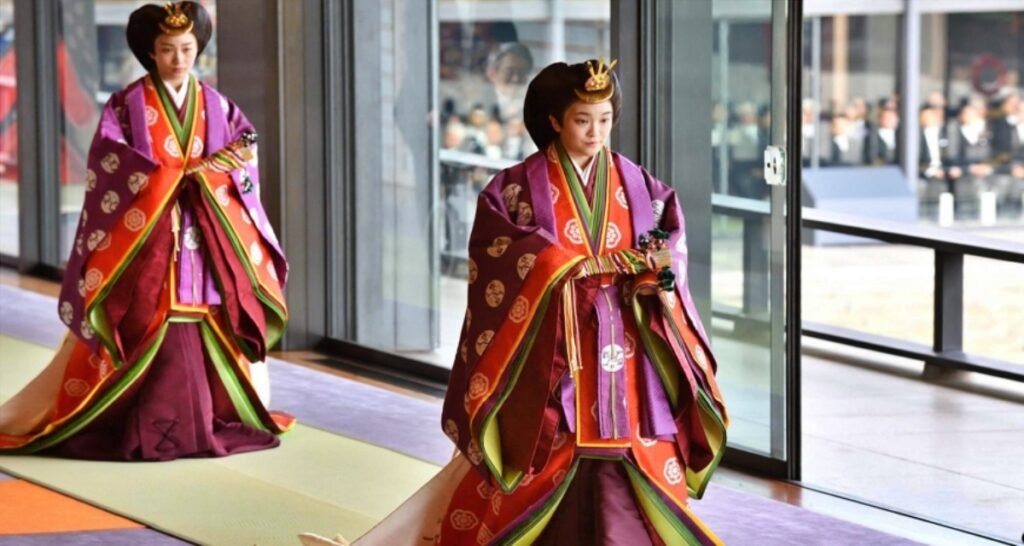
Sydney: Princess Aiko, the only child of Japan’s Emperor Naruhito and Empress Masako, turned 20 last month. Despite her royal lineage, Aiko will never be able to sit on the throne. The people of Japan have consistently stated in one vote after another that they do not mind a woman becoming emperor or the child of a female member of the royal family becoming emperor. But Japan’s imperialist domestic law forbids this – and despite the weakening of male inheritance, it doesn’t seem likely to change anytime soon. History of female emperors
The Koshitsu Tenpan (or Imperial Household Law) allows only men to sit on the throne. But this law restricting female emperors only dates back to the Meiji period in 1889, when Japan reopened its doors to the West and modeled its new government on Prussia, which banned emperors of female descent. was put. Before that, Japan has had a history of female emperors. The first female emperor of Japan that we know by name was Himiko in the 3rd century. She made peace in Japan after a long period of war, sent several diplomatic missions to China, and according to Chinese sources, her successor was also a woman. After disappearing from Japanese history for centuries, Himiko’s memory is now unfolding as a golden age, reappearing in everything from manga to mascots. Since Himiko, Japan has been ruled by at least eight women as emperors. The first year was in 592; The last woman to sit on the throne was Go-Sakuramachi, who ruled from 1762 to 1771. Reform proposals don’t go far
In 2005, the modern ban on female succession under the leadership of then-prime minister Junichiro Koizumi was likely to end. But while there was actually a debate about this in the Diet (Japan’s parliament), news came that Prince Akishino – Naruhito’s younger brother – and Princess Akishino were expecting another child. The reform process is over. And when Prince Hisahito, who became the first new male member of the royal family in nearly 41 years, was born, the whole debate was put on hold. But the problem hasn’t gone away. Since then no boys have been born in the royal family, and whenever a female member of the royal family marries a commoner, they lose their royal status.
Former Princess Mako, the eldest daughter of the Prince and Princess Akishino, was the last to do so. She has recently moved to New York with her husband, Kei Komuro, who is in the law profession. In December, a Japanese government panel in view of the gradually decreasing number of male heirs to the throne made two proposals: allowing princesses who married commoners such as Mako to retain their status as working members of the royal family. be allowed. Also, the men of the Old Principality of Japan (who had lost their status after World War II) be re-adopted by the Imperial Family. These are only proposals, and no one knows whether they will be accepted or not, and even if they are accepted, it has its disadvantages. Many of these former princely states, for example, died after the war.
In addition, there is a strong argument that the constitution (which prohibits discrimination on the basis of family of origin) makes it impossible to restore royal status to certain princely families. And even though reforms are made to allow women in the royal family to retain royal status at the time of marriage, the government is not considering granting such status to their spouses or children. Doing so could pave the way for female monarchs or the descendants of female members of the royal family to become emperors, which traditionalists vehemently oppose. Some staunch traditionalists claim that a special royal “Y” chromosome has been passed down from generation to generation in the royal family from the first emperor Jimmu in about 700 BCE. According to him, allowing Ekko’s child to sit on the throne would break this magic thread and, he argues, would call into question the legitimacy of the royal family. The restriction on female succession, meanwhile, has not been reviewed again since 2005. what the public think
Crown Prince Akishino, now second in line to the throne after his brother, is less popular in the public eye. Akishino’s spending of 4.3 billion yen (over $50 million) on home renovations, as well as the scandal over his daughter Mako’s marriage to Komuro, is not well viewed by the public. This has contributed to fueling the idea of female succession. A recent poll showed that 85% of Japanese were in favor of a female emperor and more than 80% actually wanted Princess Eko to be the next emperor.

This is a huge change since 35% of people supported the idea of a female monarch when a similar survey was conducted in 1999. The ban on female offspring is becoming increasingly difficult to justify. Japan ranked 120 out of 156 countries in the World Economic Forum’s Global Gender Gap Report in 2021, the worst among the G-7 countries. Despite legislation being passed in 2018 to promote female political representation, recent elections to the Diet Lower House actually saw a decline in female representation gay, and Prime Minister Fumio Kishida’s 20-member cabinet has only three women.
Masafumi Monden, Lecturer in Japanese Studies, University of Sydney




















































